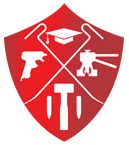Glue Pulling Training
In the world of automotive repair, glue pulling training is fast emerging as a vital skill set for those in the Paintless Dent Removal (PDR) industry. This method of repairing dents and dings is not only effective but also offers a cleaner and faster approach to achieving flawless results. Here’s a comprehensive look at glue pulling training and how it can enhance your career in the PDR industry.
Dent Repair Using Glue Pulling
Glue pulling or Glue Pull Repair (GPR) involves using specialized glue puller tools and different types of glue to pull dents from the outside of the vehicle’s body. This technique allows for the repair of door dings, hail dents, and even big dents without damaging the paint.
The GPR process is relatively straightforward but requires proper training and the mastery of specific tools and techniques. First, the area around the dent is meticulously cleaned, ensuring that the glue will adhere effectively. Then, a specialized glue puller tool is used to apply a specific type of glue to a tab that matches the size and shape of the dent. This tab is placed on the dent, and once the glue has cooled, it is used to pull the dent out from the outside of the vehicle’s body.
This method has the potential to repair a wide variety of dents, ranging from small door dings to more substantial hail dents and even big dents, all without affecting the paint. For PDR technicians, the method can lead to cleaner and faster repairs, which translates into more satisfied customers and a more profitable body shop business.
Moreover, the glue pulling technique offers some additional advantages over other methods. It can be employed in areas that are difficult to reach with traditional PDR tools, giving technicians more flexibility in their repair process. The variety in different types of glue also allows for customization based on the specific material of the car’s body and the nature of the dent. This tailoring leads to more effective and efficient repairs.
However, like any sophisticated technique, glue pulling requires comprehensive training to become proficient. Master Glue Pull courses and training programs offer the knowledge, skill sets, and hands-on experience needed to excel in this method. From learning the proper selection of glue to handling different weather conditions that might affect the glue’s stubbornness and temperatures, professional training ensures a deep understanding of the nuances involved.
Why Choose A Master Glue Pull Course for Hail and Door Ding Repair?
Skill Enhancement for PDR Technicians
For aspiring PDR technicians, mastering glue pull techniques is essential. A master glue pull training session can help techs learn one on one how to glue pull, transforming them from novices into skilled professionals in repairing hail damaged vehicles.
Career Growth
The glue pull repair training provides knowledge and skill sets that are in high demand. Whether you’re looking to work as a mobile dent medic or want to open your own PDR business, the skills you acquire from training will set you apart.
Glue Pulling Training Options Online
For those unable to attend in-person sessions, online glue pull courses are available. Online training offers flexibility and the same comprehensive training as traditional classes, from basic to advanced glue techniques.
Increased Income Potential
With proper instruction and supervision, you’ll gain the knowledge and confidence needed to make more money in the PDR industry. Whether it’s door dings, stubbornness and temperatures affecting the glue, or more complex dent damage, being able to tackle a wider range of repairs translates to a more lucrative career.
Repair Training Course for PDR Tech
- 1-Day Master Glue Pull Training: A concentrated master GPR training session where you’ll learn various glue pull techniques and get hands-on experience with dent pulling devices.
- Paintless Dent Repair Training: This program combines glue pull courses with traditional PDR training course lessons, integrating lesson plans into each PDR training.
PDR Training FAQs
- What are the benefits of learning from a state-approved institution? State-approved institutions like those licensed by the BPPE offer an educational experience that includes industry best practices, with combined experience exceeding 100 years. Quality assurance is paramount in these settings.
- What are the options for cleaner and faster repairs? Glue pulling PDR enables cleaner and faster repairs by using unique repair products and proper techniques. The training equips you with all you need to achieve professional results.
- Why should I opt for one-on-one training? One-on-one training ensures personalized attention, enabling you to gain access to specialized knowledge tailored to your needs. If you want to learn, this approach will help you become a master in the art of glue pulling.
Paintless Dent Repair (PDR) Glue Pulling Training
In summary, Glue Pulling is not just an alternative but a substantial advancement in the Paintless Dent Removal training industry. It offers technicians an effective way to repair various dent damages while maintaining the vehicle’s original appearance. With proper instruction and supervision, anyone eager to learn this craft can add a valuable skill to their repertoire, enhancing their career in the ever-growing PDR industry. Glue pulling training is more than just a course; it’s an investment in your future. From learning how to make glue for different applications to pushing dents without harm, the training covers it all. The demand for glue pull courses in the PDR industry is ever-growing, reflecting the significance of this method in today’s repair process. If you’re keen on joining this booming industry, now’s the time to explore the various training options and embark on a successful career path.



